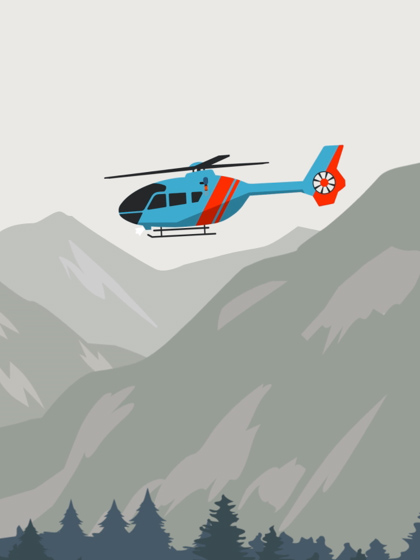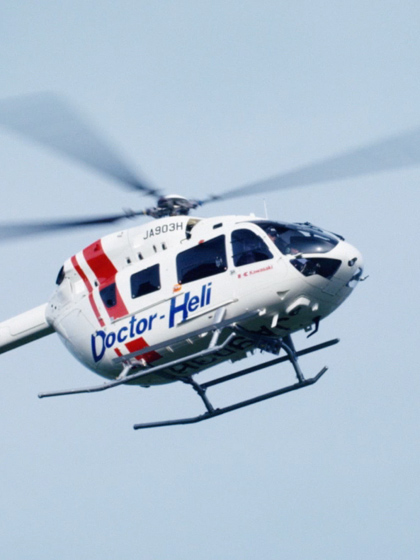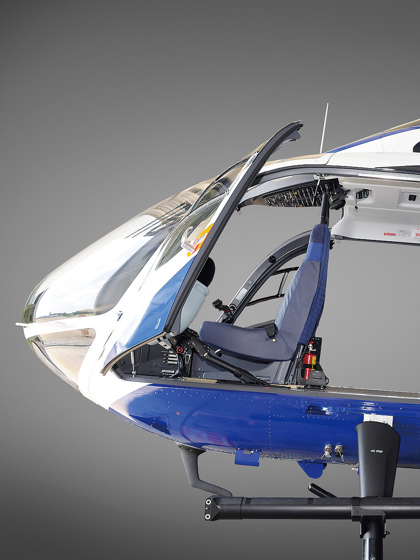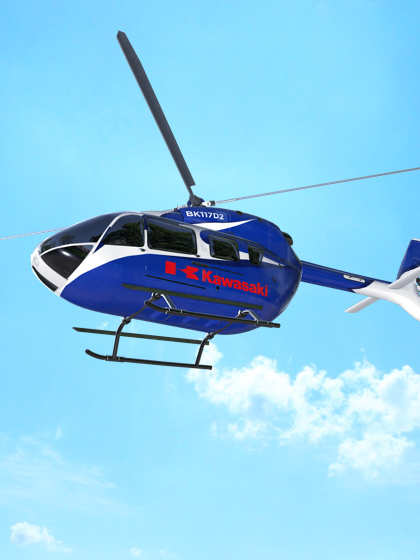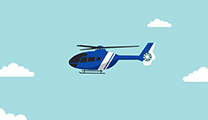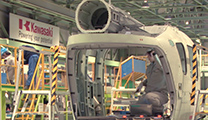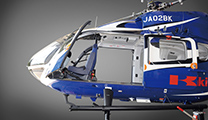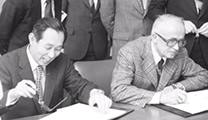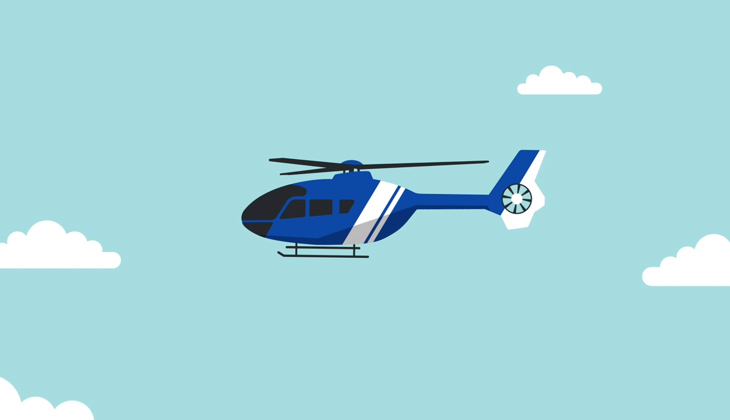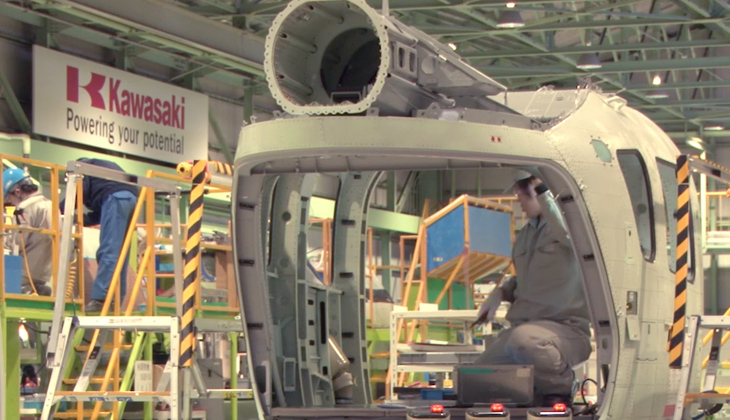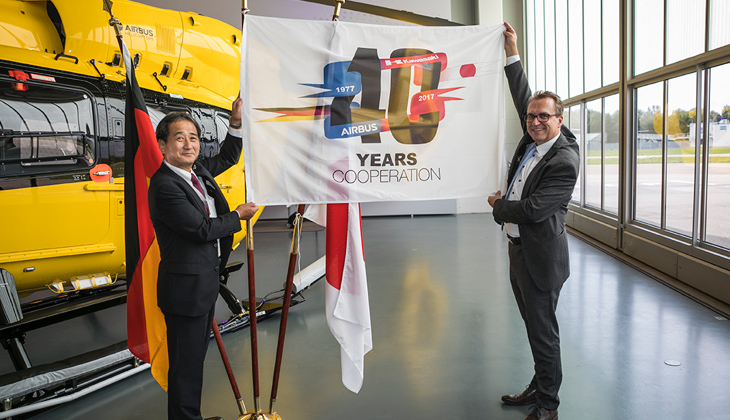Multi-Purpose Helicopter
BK117
Forward to the Mission
The BK117 is a multi-purpose helicopter that was jointly developed by Kawasaki and Messerschmitt-Bölkow-Blohm of Germany (currently Airbus) over 40 years ago. Since its first delivery in 1983, the model has been improved continuously to offer excellent mobility and safety, and has contributed to society in a wide range of fields, such as patrolling, firefighting, broadcasting, and emergency medical services. The BK117 is ready to take off for its mission.

Rushing to the
aid of those in duress
The emergency medical service (EMS) helicopter saves people whose lives are threatened by providing the fastest possible transport, not only to take patients to the hospital, but also to bring doctors to grounds of emergency. Doctors can now reach more areas to treat patients because of the use of EMS helicopters.
Dr. Ryukoh Ogino
Head of the Emergency Department and Advanced Emergency Medical Center, Kawasaki Medical School Hospital
A fatal disease or injury is a matter of great urgency, and medical treatment has to be given as quickly as possible. The EMS helicopter provides the shortest possible transport not only for the patients, but also for the doctors to the scene. Thereby the number of lives saved by medical services increase dramatically.
Profile
Graduated from the Hirosaki University School of Medicine. Engaged in emergency medical care at Kawasaki Medical School Hospital subsequent to duties at a hospital in the United States. Organized the 25th Annual Meetings of the Japanese Society for Aeromedical Services as a leading researcher on emergency medical services using aircrafts. Currently remains at the forefront of emergency medical activities utilizing air ambulances.
The Development of BK117
Why helicopters?
The performance and reliability of the BK117 is the result of the technical expertise gained through trial and error over a long period of time, as well as the challenges faced by engineers in response to diverse customer needs. Hiroya Kato, an engineer involved in the development of many types of helicopters, speaks about the strengths of Kawasaki and his devotion to his work.
Mr. Hiroya Kato
Deputy Senior Manager, Helicopter Project Engineering Department, Helicopter Project Division, Aerospace Systems Company, Kawasaki Heavy Industries, Ltd.
To realize the versatility of the BK117, we are constantly undergoing trial and error. The latest BK 117 is a product of Kawasaki’s precise systems as well as its accessories.
The Reliability of the
BK117
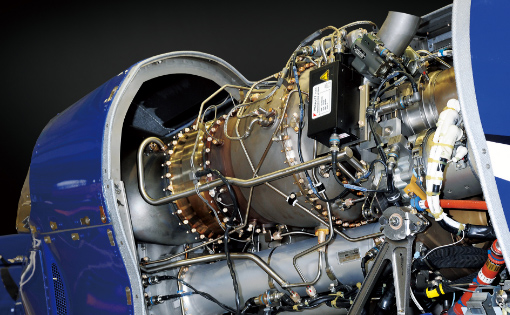
Twin engines
The BK117 is equipped with two independent turbine engines, each of which would be able to fly the helicopter alone should the other fail mid-flight, ensuring immense safety.
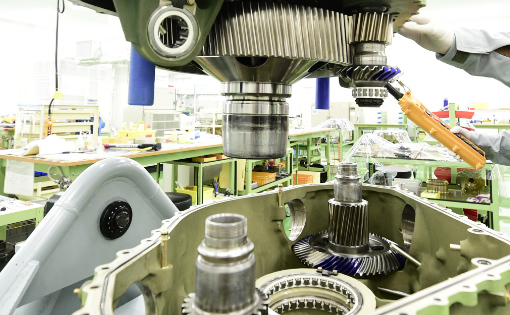
Transmission Unit*1
The transmission unit is a device that transmits rotational power to the rotor from both the right and left engines. The reliability of the Kawasaki transmission unit is due to the Loss of Lubrication*2 (LOL) performance. The unit will prevent overheating and allow the helicopter to continue flying.
*1 = A device that transmits engine power to the rotor.
*2=LOL is a capability that allows continual flight after loss of lubricant in the transmission.
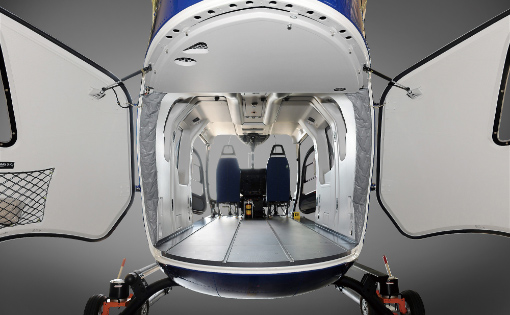
Double-leaf cargo doors (clamshell doors)
The cargo doors at the rear can be opened widely in opposite directions for easy loading and unloading of stretchers and supplies.
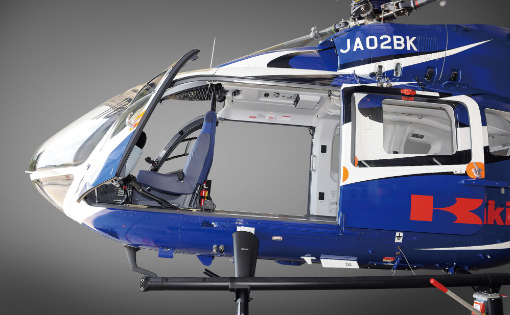
Large cabin space
The cabin space is large despite the compact body of the helicopter itself. The specifications can be changed depending on its various applications.
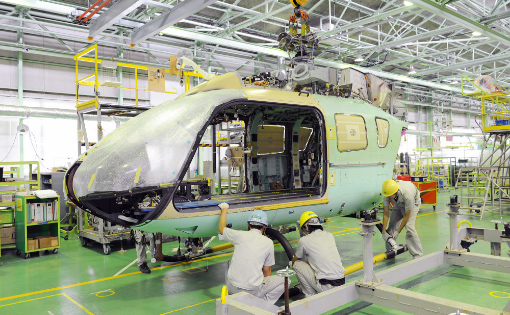
A one-stop solution
from development to after-sales support
Kawasaki also provides modification, repairs, inspection, maintenance, training and other post-sales services. We are ready to ship within 24 hours whenever parts need to be replaced, and we offer our customers a full lineup of services.
Accessories that
respond to diverse needs

Camera
Transmits information about disasters through videos for live broadcasting or for assessment.
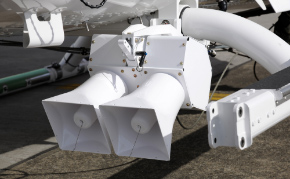
Loudspeaker
Announces alerts or evacuation orders in case of disaster.
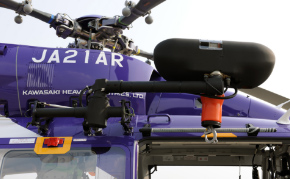
Hoist
Used to lift or lower hovering rescuers who are saving victims.
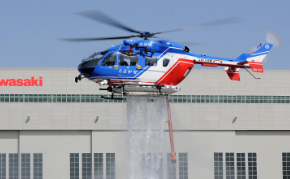
Fire-extinguishing tank
Carries and sprays water and fire retardant for aerial firefighting.
The BK117 Program
Katsumi Tamura from Kawasaki Heavy Industries and Axel Humpert from Airbus Helicopters look back at the 40 years relationship between the two companies that led to the development of a new 5-bladed H145//BK117 D-3 that was unveiled at Heli-Expo earlier 2019 year.
Mr. Katsumi Tamura
Deputy General Manager, Helicopter Project Division, Aerospace Systems Company, Kawasaki Heavy Industries, Ltd.
I believe that the strength our relationship led us to build an excellent helicopter. We will continue collaborating with Airbus to develop helicopters with applications that are more versatile than ever.
Mr. Axel Humpert
Vice President Head of Program H145, Airbus Helicopters
Kawasaki and Airbus became partners in 1977, and joined forces to conduct research and develop the BK117. Kawasaki’s technology is top class, making them a truly reliable partner. I would like to continue building on this relationship, and developing even more products.
BK117 History

1977
Start of joint development
A formal agreement was signed for joint development with Messerschmitt-Bölkow-Blohm (currently Airbus).
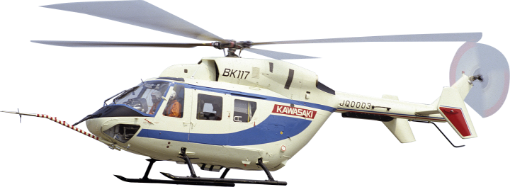
1982
Creation of the prototype
A type certificate, which approved the first domestic production of the helicopter, was obtained. The BK117 evolved from a prototype to the A, B, and C series.
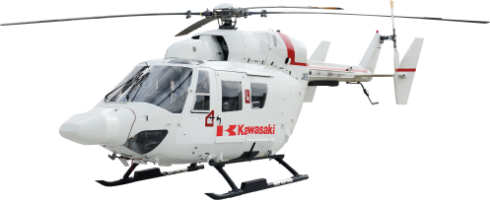
1993
The BK117 B-2
Based on the B-1 model, the engine was retrofitted to enhance performance in high temperature and high altitude conditions. This model improved the output of the transmission and expanded the range of applications as a multipurpose helicopter.

1995
The BK117 C-1 model
Engines were replaced with the Turbomeca Arriel, which exponentially improved hovering*3 performance. This stability made the C-1 a best-selling model.
*3 = To stay in one place in the air

2001
The BK117 C-2 model
The new model expanded its cabin space by 30% as compared to the C-1 model. Innovations, such as boost in flight performance from changes in the blades, noise reduction, and minimization of the pilot’s workload with legible aircraft instruments, were achieved. The C-2 led the BK117 into a new stage.
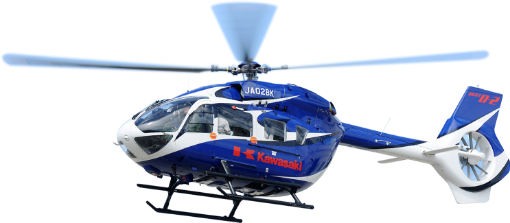
2016
The H145//BK117D-2 model
The D-2 features highly improved flight and safety performance. The engines were upgraded to twin high-output electronically-controlled engines, and with advanced technology on the gearbox, the D-2 has successfully and considerably extended the hovering operation time from 5 to 30 minutes.

2019
The H145//BK117 D-3 model
The useful load of D-3 has been increased 150㎏ compared with D-2.5-bladed main rotor instead of former 4-bladed rotor. In addition, D-3 has achieved more comfortableness, quietness, and efficiency.
1979

